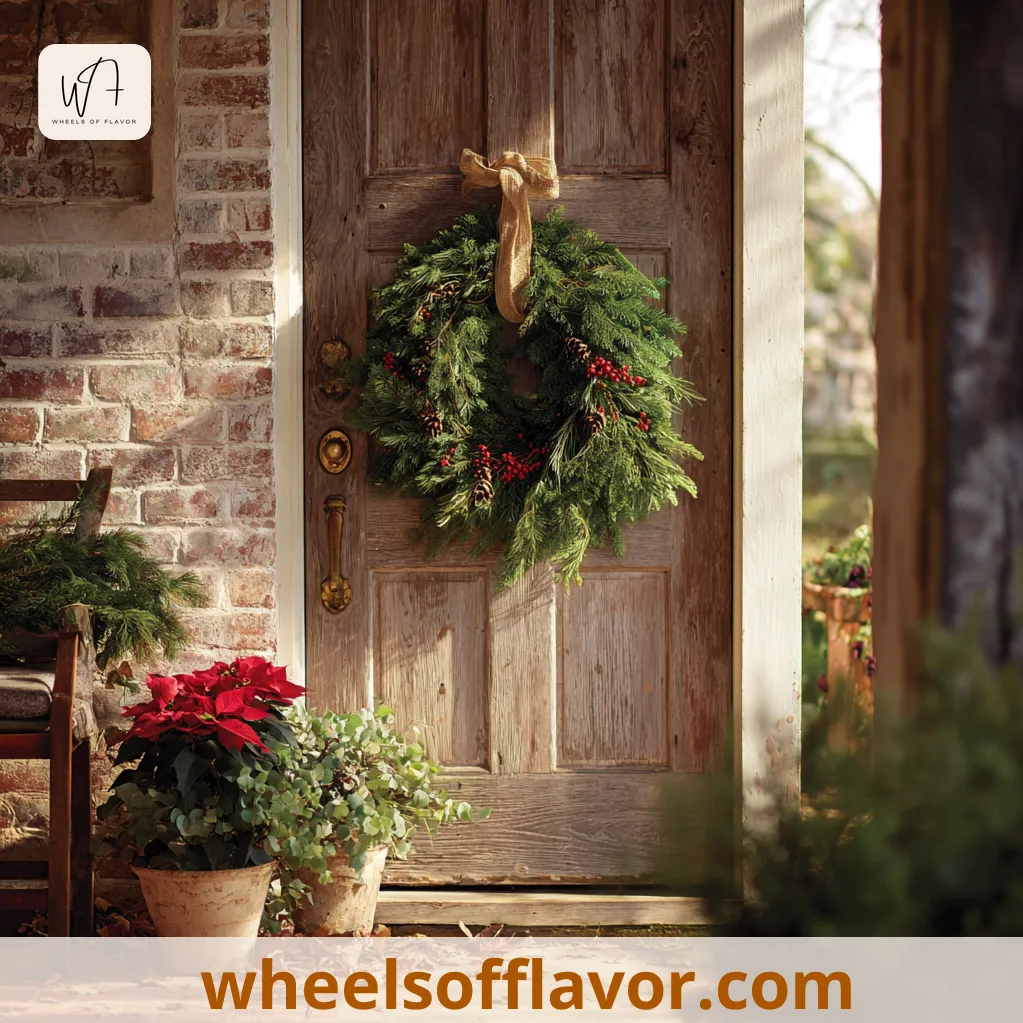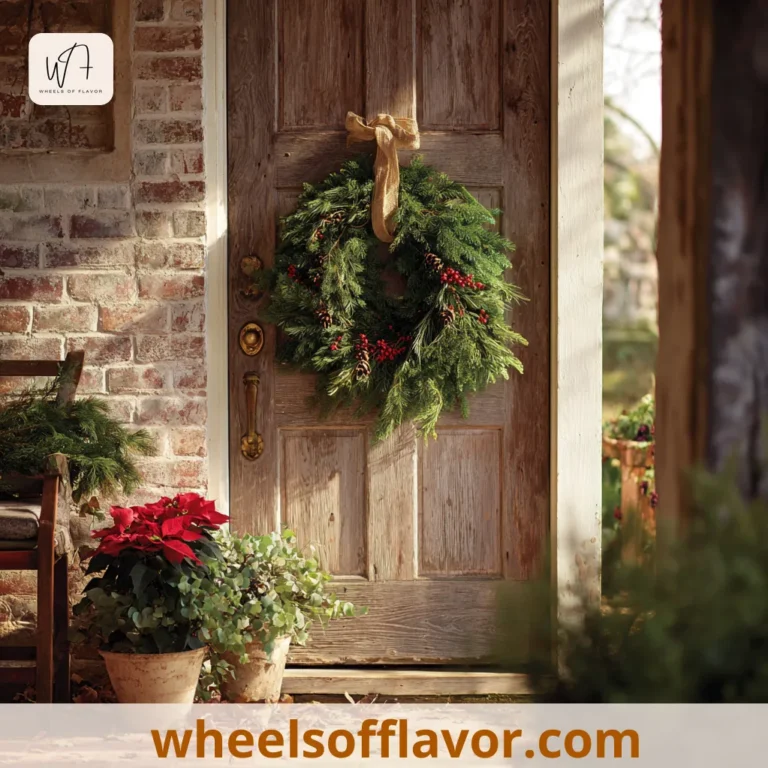
As the holiday season approaches, many of us search for ways to bring more life and warmth into our homes. A living Christmas wreath is not just a decoration; it’s a vibrant symbol of celebration that connects us to nature’s beauty. Unlike artificial wreaths that can feel cold and repetitive, a living option infuses your space with fresh greenery, earthy scents, and a touch of sustainability. Whether you’re adorning your front door or enhancing your indoor decor, this wreath serves as a daily reminder of the joy and renewal that the holidays bring. In a world where eco-conscious choices are gaining importance, opting for a living wreath reduces waste and supports local growers. Plus, its natural elements can be composted or repurposed after the season, making it a kinder choice for the planet. Crafting or choosing one allows for personalization—think pine, cedar, or holly sprigs intertwined with berries or pinecones. This isn’t just about aesthetics; it’s about creating a centerpiece that tells a story of tradition and care. Imagine the pride in hanging a wreath you’ve made yourself or the delight it brings to guests. By focusing on a living Christmas wreath, you’re investing in a piece that evolves, much like the holiday spirit itself, making your home feel truly alive and inviting. For inspiration on seasonal decor, check out this guide from The Spruce on holiday wreaths. Let’s dive into how you can make this a part of your festive rituals.
Why Choose a Living Christmas Wreath for Your Home
Selecting a living Christmas wreath offers numerous benefits that go beyond mere decoration. First, it brings an authentic, natural beauty to your space, with real greenery that releases a fresh, piney aroma—something artificial versions can't replicate. This scent can evoke cherished memories and create a cozy atmosphere, making your home feel more welcoming during the holidays. Environmentally, a living wreath is a sustainable choice. Made from renewable materials like evergreen branches, it decomposes naturally, reducing landfill waste compared to plastic alternatives. Many local nurseries or farms source these wreaths, supporting small businesses and promoting eco-friendly practices. In terms of health, real plants can improve indoor air quality by absorbing pollutants, though the effect is modest in a wreath. Aesthetically, living wreaths are versatile; you can customize them with additions like dried oranges, cinnamon sticks, or ribbons to match your decor style. They're perfect for both indoor and outdoor use, adding a festive touch to doors, mantels, or walls. However, they require some care, such as occasional misting to prevent drying out, especially in heated interiors. This minor upkeep is a small price for the vibrant, dynamic presence they offer. By choosing a living Christmas wreath, you're not just decorating—you're embracing a piece of nature that enhances your holiday experience. For more ideas on eco-friendly decor, visit our page on sustainable holiday tips.
How to Create Your Own Living Christmas Wreath
Creating a living Christmas wreath is a rewarding DIY project that adds a personal touch to your holiday decor. Start by gathering materials: a wire wreath frame, floral wire, pruning shears, and fresh greenery like pine, fir, or cedar sprigs. You can also include accents such as pinecones, berries, or eucalyptus for texture. Begin by soaking the greenery in water for an hour to keep it hydrated. Then, attach small bundles of greens to the frame using floral wire, overlapping them to cover the base completely. Work in a clockwise direction, ensuring each bundle is secure and the wreath looks full. Add decorations by wiring them in place—for example, nestle pinecones among the branches or tie a bow with a red ribbon for a classic look. If you're new to this, practice with smaller sections first. Safety tip: wear gloves to protect your hands from sharp needles. Once assembled, mist the wreath with water every few days to maintain freshness, especially if displayed indoors. This process not only results in a beautiful, custom piece but also makes for a fun family activity. A living Christmas wreath you've crafted yourself becomes a cherished tradition, with the potential to last through the season with proper care. For detailed tutorials, explore our DIY wreath-making guide to get started on your creative journey.
Caring for Your Living Christmas Wreath to Ensure Longevity
Proper care is essential to keep your living Christmas wreath looking fresh and vibrant throughout the holiday season. Start by placing it in a cool, humid area away from direct heat sources like radiators or fireplaces, as excessive heat can cause the greenery to dry out quickly. If possible, hang it outdoors or in a well-ventilated spot to mimic its natural environment. For indoor displays, mist the wreath lightly with water every two to three days to maintain moisture—this is crucial for preventing needle drop and preserving its lush appearance. Avoid overwatering, as standing water can lead to mold; instead, use a spray bottle for gentle hydration. If you notice any browning or wilting, trim those sections with pruning shears to keep the wreath tidy. In terms of longevity, most living wreaths can last 4-6 weeks with good care, depending on the type of greenery used. Fir and cedar tend to hold up better than pine in dry conditions. After the holidays, consider composting the wreath or repurposing the greens for garden mulch, aligning with eco-friendly practices. By following these simple steps, you'll extend the life of your decoration and enjoy its beauty longer. For more tips on holiday plant care, check out resources from gardening experts to make your festivities even greener.
Conclusion
In summary, a living Christmas wreath is more than just a holiday adornment—it's a sustainable, beautiful addition that brings nature's charm into your home. From its environmental benefits to the joy of crafting one yourself, this tradition offers a meaningful way to celebrate the season. We've explored why it's a superior choice, how to make it, and tips for care, empowering you to incorporate it into your decor with confidence. As we look to the future, trends in home decor are shifting towards eco-conscious and personalized elements, making living wreaths a timeless option. Consider making this a yearly ritual; it not only reduces waste but also fosters creativity and connection. Share your wreath-making experiences with friends or on social media to inspire others. Remember, the holidays are about creating memories, and a living Christmas wreath can be a centerpiece for those moments. For more inspiration on festive ideas, browse our holiday decor section and start planning your next project today. Embrace this simple yet impactful tradition to make your celebrations even more special.
Frequently Asked Questions
Q: How long does a living Christmas wreath typically last?
A well-maintained living Christmas wreath can last anywhere from 4 to 6 weeks, depending on factors like the type of greenery, environmental conditions, and care. Evergreens such as fir or cedar are more resilient and may last longer if kept in cool, humid areas away from direct heat. Regular misting with water helps prevent drying out, extending its freshness. If displayed outdoors in colder climates, it might even last through the entire holiday season. Afterward, you can compost it or reuse the materials, making it a sustainable choice.
Q: Can I add lights or other decorations to a living Christmas wreath?
Yes, you can enhance a living Christmas wreath with lights, ornaments, or other decorations, but it's important to do so carefully to avoid damaging the greenery. Use battery-operated LED lights for safety, as they generate less heat and reduce fire risk compared to traditional strings. Secure decorations with floral wire or gentle clips instead of glue or nails, which could harm the plants. Avoid overloading the wreath, as heavy items might cause it to sag or lose shape. This allows you to personalize it while keeping it natural and functional.
Q: What are the best types of greenery to use for a living Christmas wreath?
Popular choices for living Christmas wreaths include fir, pine, cedar, and holly, as they are durable and have a classic holiday appeal. Fir branches, such as balsam or Douglas fir, are favored for their strong scent and needle retention. Cedar adds a textured look and pleasant aroma, while pine offers flexibility but may dry out faster. Holly provides vibrant berries for color, but ensure it's non-toxic if you have pets. Mixing varieties can create a lush, multi-dimensional wreath. Always source greenery sustainably from local nurseries or your own garden for the best results.

